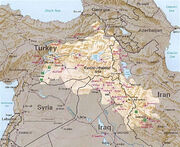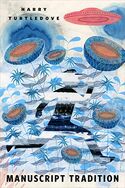TR (Message Wall | contribs) No edit summary |
No edit summary |
||
| Line 10: | Line 10: | ||
The borders of this Kurdistan are unrevealed. |
The borders of this Kurdistan are unrevealed. |
||
| + | ==References== |
||
| + | {{Reflist}} |
||
{{Countries of Asia}} |
{{Countries of Asia}} |
||
{{Manuscript Tradition}} |
{{Manuscript Tradition}} |
||
Latest revision as of 03:40, 18 October 2020

Areas inhabited by Kurdish people in 1992.
Kurdistan or Greater Kurdistan is a roughly defined geo-cultural historical region wherein the Kurdish people form a prominent majority population and Kurdish culture, languages, and national identity have historically been based. Kurdistan roughly encompasses the northwestern Zagros and the eastern Taurus mountain ranges. The territory corresponds to Kurdish irredentist claims.
The region includes southeastern Turkey (Northern Kurdistan), northern Syria (Rojava or Western Kurdistan), northern Iraq (Southern Kurdistan), and northwestern Iran (Eastern Kurdistan). Some Kurdish nationalist organizations seek to create an independent nation state consisting of some or all of these areas with a Kurdish majority, while others campaign for greater autonomy within the existing national boundaries.
Kurdistan in "Manuscript Tradition"[]
In 2219, Kurdistan was hit by an antibiotic-resistant plague. The Prime Minister of Kurdistan blamed the Shah of Iran for the plague. When the Shah denied it, the Prime Minister said that genetic work in Kurd labs proved the Shah was a lying Shiite dog.[1]
Literary comment[]
The borders of this Kurdistan are unrevealed.
References[]
| |||||||
